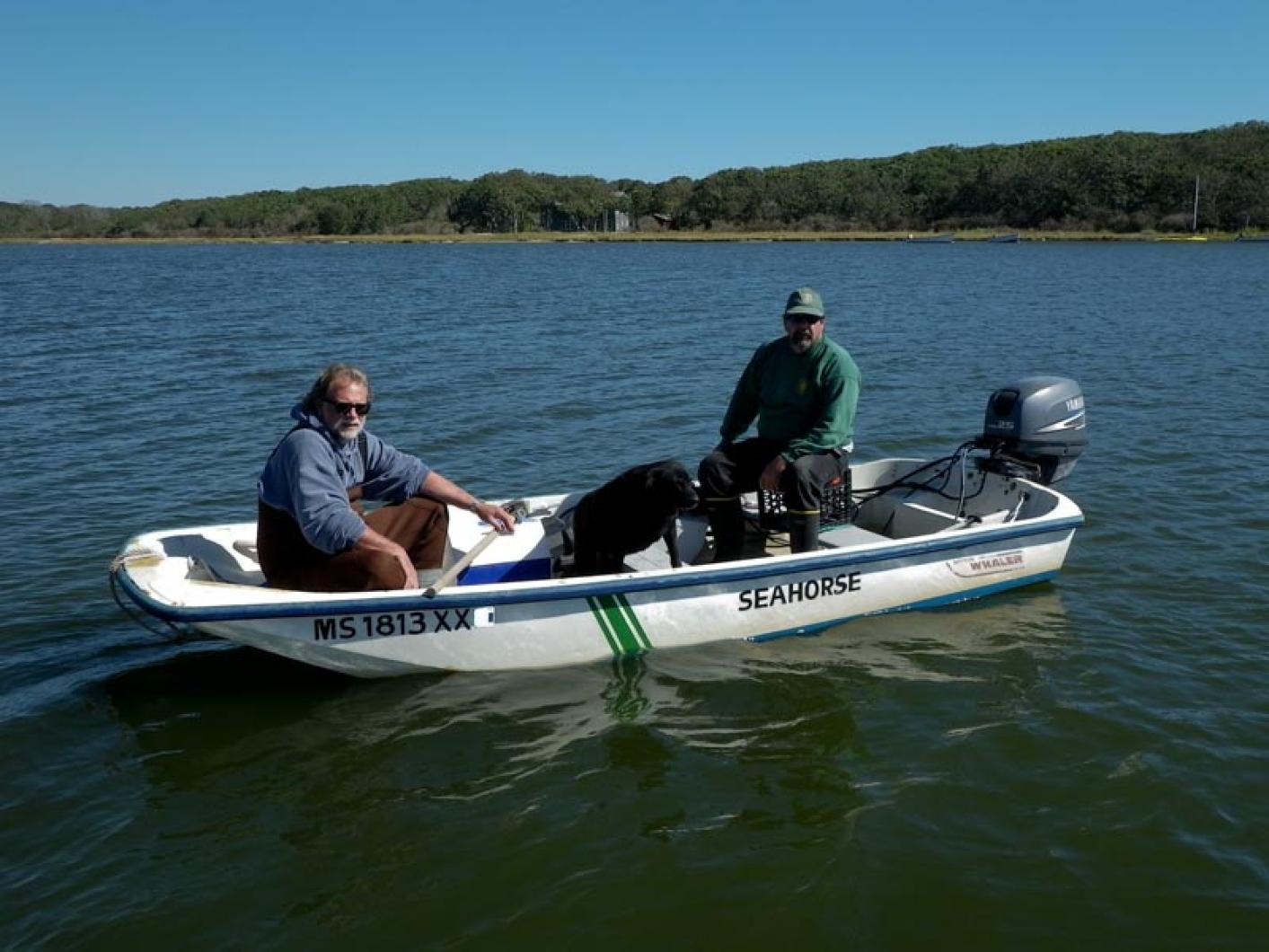The Vineyard had a bumper crop of hatchery-raised shellfish this year. The Martha’s Vineyard Shellfish Group, which provides shellfish to all Island towns, produced nearly double the number of quahaugs and oysters. The bay scallop crop was also good, although not as good as last year.
“We were at capacity,” said Rick Karney, director of the nonprofit shellfish group that operates out of two hatcheries on the Lagoon Pond in Vineyard Haven and Oak Bluffs. This marked the first summer that the hatchery used the state-owned former lobster hatchery, now named the John T. Hughes Hatchery and Research Facility. That facility is in Oak Bluffs. The shellfish’s group’s original solar hatchery is in Vineyard Haven.
“We raised close to 10.5 million quahaugs when we usually do five or six. It was almost double what we usually do,” Mr. Karney said.
At the Hughes hatchery alone they raised four million quahaugs. “That is a lot and it was our shake-down season,” Mr. Karney said.
Elizabeth Mellon, a hatchery assistant, was responsible for the day-to-day operation of the satellite facility, and Mr. Karney said she overcame quite a few challenges. A bolt of lightning hit the electrical panel for the pump. A boat hit the intake pipe. Fortunately, the state Division of Marine Fisheries picked up the utility costs for the building.
The hatchery raised and distributed 9.5 million bay scallops, down from the 18 million raised last year, but Mr. Karney said there were environmental challenges this year with bacteria in the water. “The water quality was really good in Lagoon Pond, until we started getting rain,” he said. “Last year was exceptional on water quality. But this year the animals were hanging in there. There was excessive heat and nutrients from road runoff, all the conditions that bacteria like.” And the baby bay scallops suffered.
Meanwhile, like quahaugs, hatchery-raised oysters also saw a banner year. Mr. Karney said they raised 10.5 million oysters in conjunction with remote sets in both Edgartown and Tisbury Great Ponds. The oysters spawned at the hatchery and were transported to private property sites in both Great Ponds. The numbers were well up over the previous year’s count of 6.5 million baby oysters.
Chilmark shellfish constable Isaiah Scheffer husbanded the oysters in Tisbury Great Pond.
In the Edgartown Great Pond, Boo Bassett, working under a local financial grant, nurtured both natural set oyster seed and seed raised at the hatchery. He used a number of different floating shellfish enhancement projects in the ponds to give the animals better survival rates. Funding for his work comes from the Jewish Communal Fund. Mr. Bassett, who grew up on the Island and has worked as a commercial fisherman and waterman, spent the summer taking care of the oysters, with help from others, among other things making sure that the juvenile animals had culch to cling to as they emerged from larval and swimming stages.
In recent years, the two Great Ponds have seen a strong comeback in oyster
beds. Oysters that spawned two years ago now pepper the pond bottoms. The comeback is significant; the oyster fishery had experienced a collapse about a decade ago due to disease.
“I am very encouraged by what I continue to see in Edgartown Great Pond,” Mr. Karney said. “We are getting reliable sets of oysters. Everything appears to be very healthy.”
He continued: “Basically, oysters are keystone in the marine system. The oysters are almost like coral reefs. They provide the same nooks and crannies that are abundant in coral reefs. They provide habitat. Bringing back oysters in the Great Pond is really bringing back the whole ecosystem.”
The shellfish group runs on an annual budget of $250,000, with the towns carrying a big share of the cost. In exchange the towns receive millions of shellfish to release in their coastal ponds.
When it comes to that annual budget, Mr. Karney said: “We have a deficit of close to $35,000 to $40,000 that we have to come up with from other sources.”
The group held a fundraiser at the Chilmark Community Center last spring that raised $8,500. They also received close to $11,000 to help in the operation of the Hughes hatchery. A total of $5,000 came from the Lagoon Pond Association, and another $6,000 from the Martha’s Vineyard Permanent Endowment Fund.
It is not just shellfishermen that benefit from the healthy production of shellfish on the Vineyard, Mr. Karney explained. Shellfish are filter feeders. They feed on many of the living organisms that can grow and contribute to poor water quality. In sum, Mr. Karney said having lots of young and old shellfish doing well in the ponds benefits everyone on the Island.









Comments (1)
Comments
Comment policy »